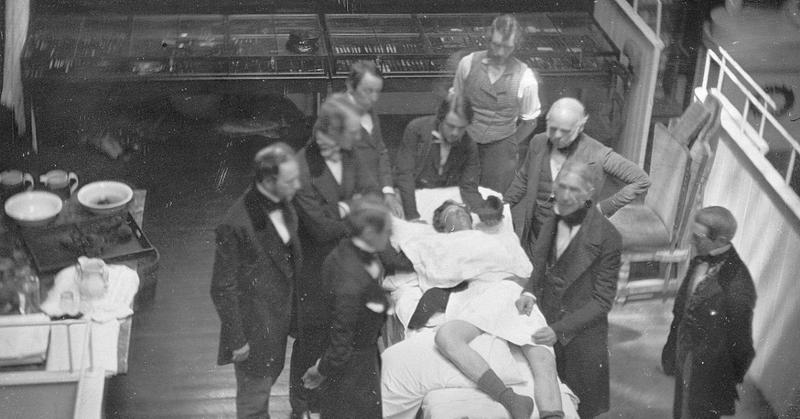The History Of Anesthesia: How We Discovered Painkillers
By | September 25, 2020

No one is ever happy about a surgical procedure, but at least the gut-wrenching agony of feeling your body ripped in twain is off the table. Until the 19th century, people didn't have that option. An operation in the days before anesthesia, and even the early days of painkillers, meant being completely awake, aware, and in unimaginable pain while a doctor did their thing. The story of the discovery of anesthesia is so horrifying that you'll be thanking your doctor the next time you go under the knife.
No Fun For Anyone
As little as patients liked to be cut open by a doctor in the days before anesthesia, those doctors were just as upset about doing the cutting. John Abernethy, a surgeon at London's St. Bartholomew's Hospital in the early 1800s, likened going into an operation to "going to a hanging," which isn't the first comparison you want from the person performing the operation.
Back then, surgery was so harrowing that patients often chose to simply live with whatever condition they had for as long as they could, and those who did brave the knife came back with stories that were made of nightmares. In 1811, author and playwright Fanny Burney had the forethought to write about her experience as a pre-anesthesia mastectomy patient:
When the dreadful steel was plunged into the breast ... I needed no injunctions not to restrain my cries. I began a scream that lasted intermittently during the whole time of the incision ... so excruciating was the agony ... I then felt the knife [rack]ling against the breast bone—scraping it.

Standing On The Shoulders Of Giants
By 1824, English physician Henry Hill Hickman had begun experimenting with putting animals to sleep for brief periods of time using carbon monoxide. Obviously, it was an imperfect solution, but the medical world was inching closer to legit anesthesia. Twenty years later, a Harvard medical student named William Morton was introduced to the concept of anesthesia by Charles T. Jackson, a chemistry professor who was hyped about the possibilities of the anesthetic properties of ether.
Morton soon dropped out of med school to start his own dentistry practice, and the next year, he attended a lecture at Massachusetts General Hospital where his former colleague, Horace Wells, attempted a painless tooth extraction using nitrous oxide. Although the demonstration was a failure, it inspired Morton to pursue the study of ether. It's unclear whether he spoke to Jackson about ether following the demonstration or began running tests on his own, but either way, he was determined to be the first doctor to use it as a form of anesthesia on a patient.

The First Use Of Ether As An Anesthetic
On September 30, 1846, Morton successfully extracted a tooth using ether as an anesthetic. A few weeks later, Boston surgeon Henry Jacob Bigelow hosted a demonstration where he successfully and painlessly removed a tumor from the neck of a Mr. Edward Gilbert Abbott with the same method.
Morton should have been over the Moon that his ether hunch was correct, but all he saw were dollar signs slipping away from him. He didn't want anyone to know he was using ether in his procedures, so he began referring to it as "Letheon," even going so far as to secure a patent for the anesthetic liquid a month after his initial tooth extraction.
The medical community at large condemned Morton's application for the patent, accusing him of trying to hinder a major medical breakthrough for which he couldn't reasonably take sole credit for his own selfish interests. Morton insisted that he was only concerned with ensuring the appropriate administration of the procedure, but whether or not he was telling the truth, he was ostracized from the medical community.

The Future Of Anesthesia
In the decade following Morton's revelation, the science of pain reduction increased rapidly. By 1847, doctors were using chloroform to ease the pain of childbirth, and in 1853, two medical professionals independently invented the hollow hypodermic needle to easily administer anesthesia. Nowadays, we have a whole buffet of general, local, topical, and probably flavored anesthesia to choose from. Gone are the days when patients were given little more than a shot of whiskey and a prayer, and good riddance to them.

